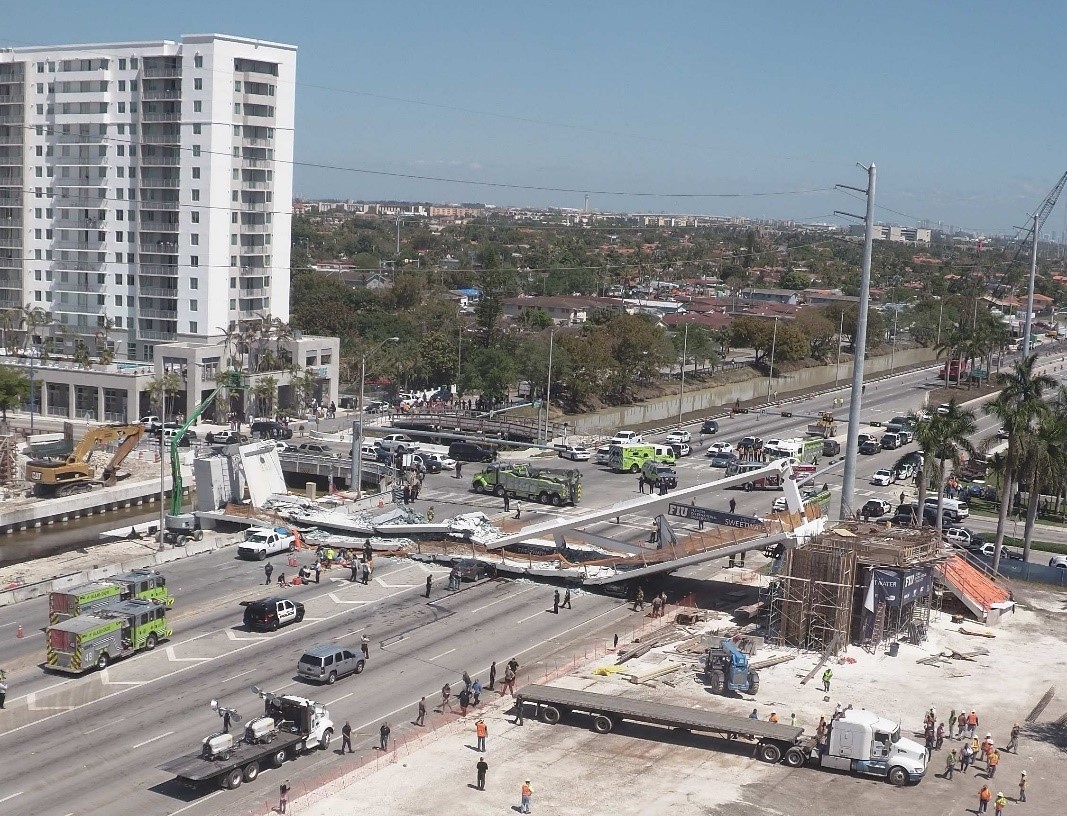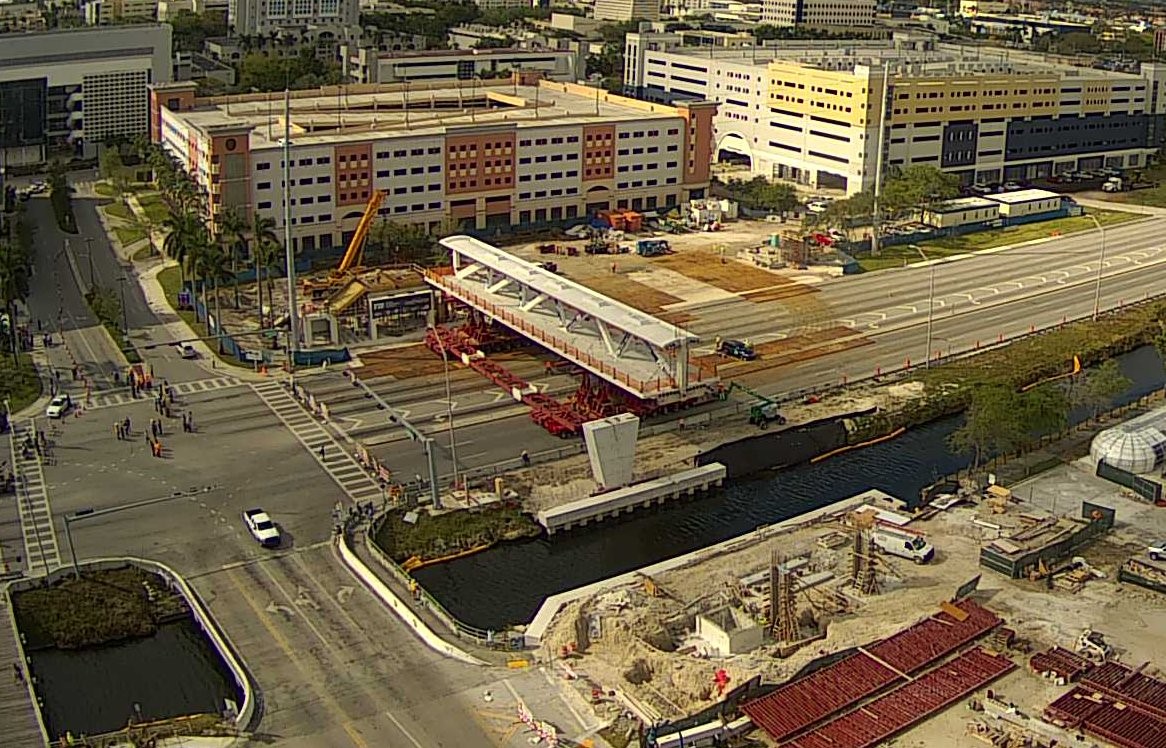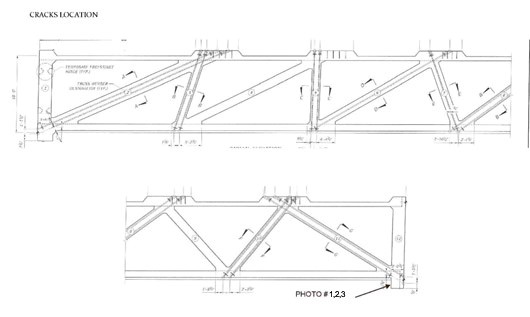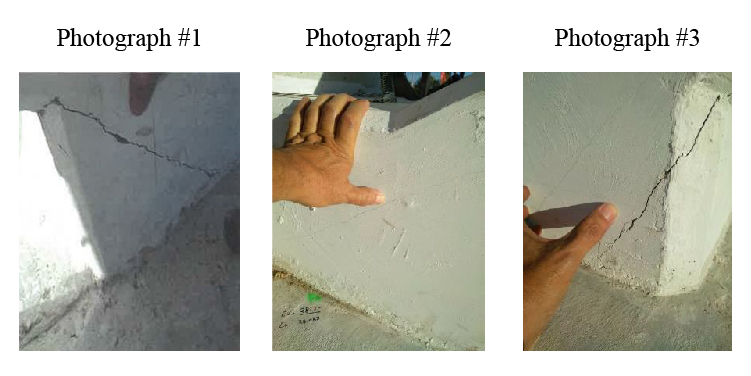Preliminary Report- Highway: Collapse of Pedestrian Bridge Under Construction Miami, Florida (HWY18MH009)
Executive Summary
The information in this report is preliminary and will be supplemented or corrected during the course of the investigation.
On Thursday, March 15, 2018, about 1:47 p.m. eastern daylight time, a
partially constructed pedestrian bridge crossing SW 8th Street—an
eight-lane roadway—in Miami, Florida, experienced a structural
failure.[1] As a result, the 174-foot-long bridge fell about 18.5 feet
onto SW 8th Street (figure 1). Eight vehicles that were stopped below
the bridge at the time of the collapse were fully or partially crushed;
seven of those vehicles were occupied. As a result of the bridge
collapse, one bridge worker and five vehicle occupants died. Four bridge
workers and four other people were injured.
Figure 1. View of collapsed pedestrian bridge. (Source: Florida International University)
The bridge was to be completed by early 2019 and was built using an accelerated bridge construction method—a technique intended to minimize disruption of traffic. On March 10, 2018, the walkway, diagonals, and canopy comprising the bridge, which had been built in a lot adjacent to SW 8th Street, was moved from the lot, using transporters, into position across the roadway and then lowered onto bridge piers on either side of the roadway (figure 2).[2] Traffic on SW 8th Street was detoured during the installation period, and the entire roadway was closed to facilitate movement of the structure.

Figure 2. View of transporters moving the pedestrian bridge into place on the bridge piers.
(Source: Florida International University)
(Source: Florida International University)
On March 10 per the bridge design plans, construction crew members de-tensioned the bridge diagonal members on the north and south ends of the bridge. When the collapse occurred on March 15, a construction crew was positioned on the structure working on re-tensioning the number 11 diagonal member connecting the canopy and the deck at the north end of the bridge. Because a crane was being used for this work, two of the three westbound lanes below the north end of the bridge were closed to traffic; however, the five eastbound lanes remained open, and eastbound traffic was not detoured.
The NTSB is evaluating the bridge design, the construction process, and the construction materials. In addition, the NTSB is evaluating the emergence of cracks in the region of diagonal members 2 (south end of the bridge) and 11 (north end of bridge), see figure 3, and the propagation of cracks in the region of diagonal member 11. Photographic documentation from February 24, 2018 shows cracks in the region of diagonal member 11 (figure 4).

Figure 3. Elevation view of the pedestrian bridge.
(Source: Bolton-Perez and Associates Consulting Engineers)
(Source: Bolton-Perez and Associates Consulting Engineers)

Figure 4. Photographic documentation of the crack in the region of bridge diagonal 11.
(Source: Bolton-Perez and Associates Consulting Engineers)
Assisting in the NTSB investigation are the following Party Members;
- Federal Highway Administration (FHWA)
- FHWA - Turner Fairbank Highway Research Center (TFHRC
- Occupational Health and Safety Administration (OSHA)
- Department of Transportation Office of the Inspector General (OIG)
- Florida Department of Transportation (FDOT)
- Miami-Dade Police Department (MDPD)
- Florida Highway Patrol (FHP)
- Florida International University (FIU)
- City of Sweetwater (CS)
- FIGG Bridge Engineers, Inc. (FIGG)
- Munilla Construction Management (MCM)
- Structural Technologies, LLC (VSL)
- Barnhart Crane & Rigging (BCR)
2. “Transporters” are devices designed to move the structure into place.
Probable Cause
The information in this report is preliminary and will be supplemented or corrected during the course of the investigation.